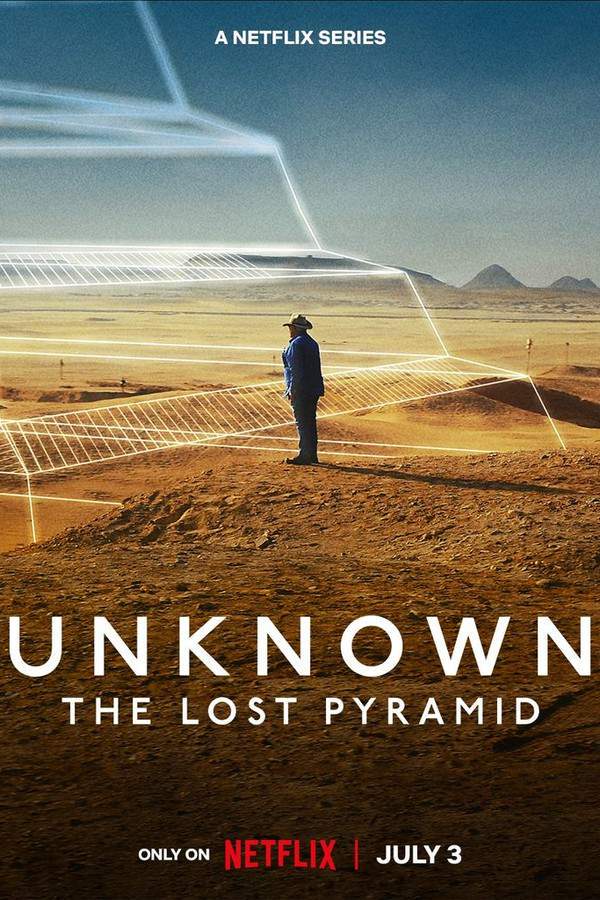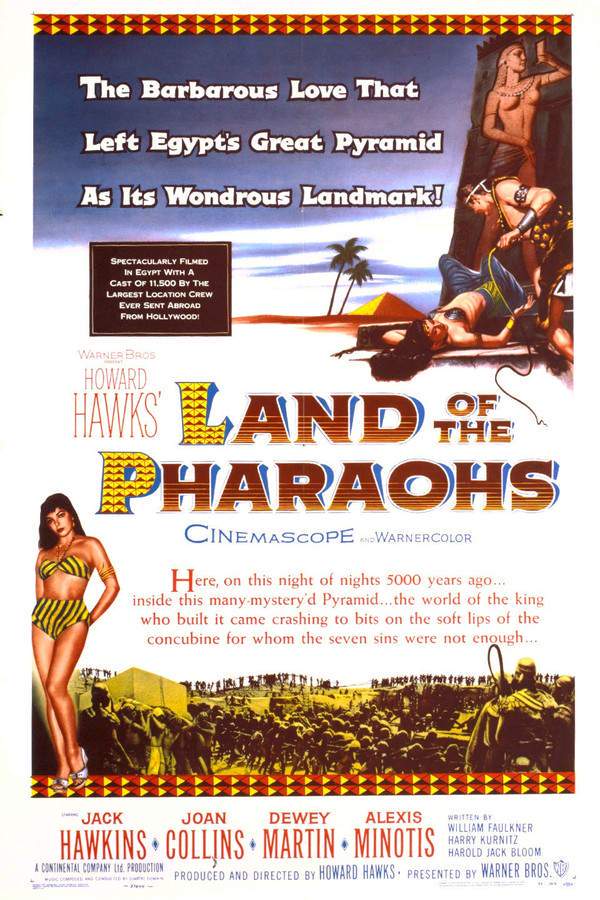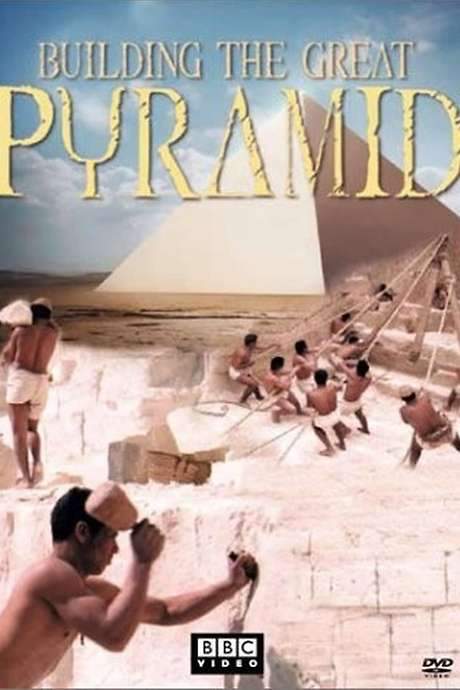Unknown: The Lost Pyramid 2023

In the Saqqara desert, renowned archaeologist Dr. Zahi Hawass pursues the legend of a lost pyramid hidden beneath the sands. Simultaneously, his protégé and rival, Dr. Mostafa Waziri, searches for an undisturbed tomb within an ancient necropolis. The two Egyptology experts find themselves competing for discovery in a thrilling quest to unearth history’s secrets.
Does Unknown: The Lost Pyramid have end credit scenes?
No!
Unknown: The Lost Pyramid does not have end credit scenes. You can leave when the credits roll.
Meet the Full Cast and Actors of Unknown: The Lost Pyramid
Explore the complete cast of Unknown: The Lost Pyramid, including both lead and supporting actors. Learn who plays each character, discover their past roles and achievements, and find out what makes this ensemble cast stand out in the world of film and television.

Afaf Wahba
Self - Lead Archaeologist

Ammar El-Amir Sadeq
Self - Overseer of Workers

Ashraf Mohi El Din
Self - Chief Conservator, Saqqara

Essam Shehab
Self - Archaeologist Gisr El-Mudir Site Director

Hamada Shehata Ahmed Mansour
Self - Lead Excavator

Mohamed Youssef
Self - Bubasteion Excavation Director

Mostafa Waziri
Self - Archaeologist & Supreme Council of Antiquities

Tori Finlayson
Self - Egyptologist at Johns Hopkins University

Zahi Hawass
Self - Director of the Piramids
External Links and Streaming Options
Discover where to watch Unknown: The Lost Pyramid online, including streaming platforms, rental options, and official sources. Compare reviews, ratings, and in-depth movie information across sites like IMDb, TMDb, Rotten Tomatoes or Metacritic.
Ratings and Reviews for Unknown: The Lost Pyramid
See how Unknown: The Lost Pyramid is rated across major platforms like IMDb, Metacritic, and TMDb. Compare audience scores and critic reviews to understand where Unknown: The Lost Pyramid stands among top-rated movies in its genre.

The Movie Echo Score
Overall, Unknown: The Lost Pyramid delivers an engaging look at contemporary Egyptian archaeology, buoyed by enthusiastic participants and striking on‑location visuals. While critics praise its informative energy and accessibility, viewer feedback is split, with some questioning the documentary’s focus on a controversial figure and its premature release. The film succeeds in generating excitement about the discoveries, yet its narrative consistency and depth suffer from self‑promotional elements. Consequently, the documentary offers a solid,! if uneven, viewing experience.
The Movie Echo Score Breakdown for Unknown: The Lost Pyramid

Art & Craft
In terms of cinematography and overall visual craftsmanship, the documentary excels with immersive camera work that places viewers within tomb chambers, as praised by several viewers. Production design highlights the excavation sites authentically, while editing maintains a steady rhythm without noticeable lapses. Though some critics do not comment directly on artistic choices, the visual execution contributes positively to the film’s impact.

Character & Emotion
When evaluating the participants’ presence and emotional resonance, the film benefits from the archaeologists’ palpable enthusiasm, which drives much of the documentary’s appeal. However, several viewers criticize the central figure’s self‑aggrandizing tone, describing it as repetitive and detracting from deeper character insight. This split perception results in a moderate assessment of the documentary’s character development and emotional depth.

Story & Flow
The narrative centers on the race to locate the elusive pyramid of Pharaoh Huni, delivering a premise that many find compelling and educational. Critics highlight its ability to transform a potentially dry subject into engaging moments, while some users note the storyline feels unfinished and overly focused on personal bragging. Consequently, the story’s coherence and pacing earn a balanced rating.

Sensory Experience
The documentary’s auditory and visual palette is anchored by clear sound design that captures ambient excavation noises and interviews, creating an immersive atmosphere. While the soundtrack receives limited mention, the on‑site footage showcases vivid colors and texture, reinforcing the sense of place. Overall, the sensory elements support the film’s informational goals without overwhelming the viewer.

Rewatch Factor
Given its blend of discovery excitement and informative content, the film invites repeat viewings for audiences interested in archaeology and history. Positive feedback notes the thrill of following real‑time excavations, while critiques of self‑promotion and incomplete coverage may diminish long‑term appeal for some viewers. Overall, the documentary offers enough intrigue to merit a second watch, though its replay value is modest.


100%
TOMATOMETER

73%
User Score

6.6 /10
IMDb Rating

74
%
User Score

3.3

3.90/5
From 79 fan ratings
Take the Ultimate Unknown: The Lost Pyramid Movie Quiz
Challenge your knowledge of Unknown: The Lost Pyramid with this fun and interactive movie quiz. Test yourself on key plot points, iconic characters, hidden details, and memorable moments to see how well you really know the film.
Discovering Ancient Egypt: The Lost Pyramid Quiz: Test your knowledge about the monumental discoveries made by Dr. Zahi Hawass and his team in the quest for the Lost Pyramid of Huni.
What was Dr. Zahi Hawass primarily searching for in this documentary?
The pyramid of Huni
The tomb of Tutankhamun
The Great Pyramid of Giza
The burial site of Cleopatra
Show hint
Full Plot Summary and Ending Explained for Unknown: The Lost Pyramid
Read the complete plot summary of Unknown: The Lost Pyramid, including all major events, twists, and the full ending explained in detail. Explore key characters, themes, hidden meanings, and everything you need to understand the story from beginning to end.
Dr. Zahi Hawass is on a mission to uncover a significant archaeological find that he believes will solidify his legacy — the pyramid of Huni, the last Pharaoh of Egypt’s Third Dynasty. This ancient king is a pivotal figure from the Old Kingdom, yet very little is known about him, making the discovery of his burial site essential for understanding Egypt’s historical narrative. Huni ruled approximately 4500 years ago, and aside from his name appearing on a few King’s lists, the location of his pyramid remains a mystery, unlike other pharaohs from the same period who built their tombs at Saqqara.
Initially, Hawass was reluctant to pursue a career in archaeology, primarily because most researchers in Egyptian history were foreigners. He felt strongly that Egyptians should take the initiative in uncovering and preserving their own history. Many artifacts unearthed by foreign archaeologists were transported out of the country, which further emphasized the need for local experts to delve into their heritage.
As Hawass and his dedicated team embarked on an intensive nine-month excavation, Mostafa Waziri, his protégé, was also busy at a nearby site known as Bubasteion. Four years prior, this location revealed the tomb of Wahtye, and Waziri was optimistic about uncovering more groundbreaking artifacts. The team soon discovered a shaft, which upon exploration, revealed the Eye of Horus — a promising sign indicating potential coffins. The excitement in the air surrounded the possibility of finding an entire burial chamber filled with sarcophagi.
At the same time, Hawass’ team uncovered a crucial limestone quarry, reinforcing his theory that Huni’s pyramid was indeed located in Gisr-El-Mudir. Historically, pyramids were constructed near quarries to streamline the logistics of material transportation. The discovery of nine statues belonging to members of Egypt’s elite hinted that a royal necropolis was situated nearby, especially as it is common for high-ranking officials to be buried adjacent to a pharaoh. The statues’ pristine condition suggested that they had not been looted, sparking excitement and hope that Huni’s pyramid might also remain undisturbed, thus securing Hawass’s place in history.
Inspiration for his relentless pursuit comes from renowned English archaeologist Howard Carter, who took five years to locate King Tutankhamun’s tomb. Hawass adopted Carter’s lesson of patience and resolve. Eventually, they confirmed the tomb’s untouched status, leading to the discovery of a sarcophagus containing a skeleton. Due to the rudimentary methods of mummification in the Old Kingdom period, the skeleton had undergone deformation. Recognizing the damage, Hawass chose to leave the coffin intact.
Despite the arduous challenges posed during the final month of excavation, the team’s morale soared as they were driven by the prospect of unveiling a significant piece of history. Another coffin was discovered, this one sealed and impressively sized. It belonged to a woman named Nebet Hut, whose remains had been preserved impeccably for over 4,300 years, along with ornaments that maintained their vibrant blue-green hues through millennia.
Hawass asserted that this mummy might be the oldest and best-preserved ever found in Egypt, indicating the individual’s status was likely linked to the royal lineage. The gilded cane found among the artifacts implied she held a significant position, suggesting that the burial site of a Pharaoh might be nearby. In the final week of their quest, the team stumbled upon a limestone wall, prompting hope that they might finally uncover the pyramid of Huni — an uncertain yet tantalizing prospect.
Meanwhile, Mostafa Waziri successfully discovered the entrance to a well-preserved tomb stacked with coffins. Upon entering, his team found several protective statues essential for ancient Egyptians, necessitating their removal before they could access the coffins. It took conservators over ten days to restore these fragile artifacts. Strange, unfamiliar objects littered the area, adding an air of mystery as the absence of written records rendered their purpose enigmatic.
Once the statues were cleared, attention turned to a particularly intriguing wooden coffin belonging to an individual named Ahmose. Upon unveiling it, Waziri uncovered a bronze statuette of a cat, alongside a gold amulet depicting a bird with a human head. Most compelling was a well-preserved papyrus, identified later as the Waziri papyrus, which turned out to be an unprecedented find among ancient Egyptian scrolls. After a meticulous restoration effort lasting three weeks, the nine-meter scroll was finally unrolled, revealing 113 chapters from “The Book of Death,” representing one of the most well-maintained records of ancient Egyptian beliefs.
Against the backdrop of Waziri’s remarkable finds, Hawass maintained faith that the world’s attention would soon be drawn to his pyramid exploration. Unknown: The Lost Pyramid highlights how two of Egypt’s leading Egyptologists are reshaping the field of archaeology. Their dedication not only illuminates the past but builds a future for the discipline in Egypt. Despite pursuing their distinct paths, mutual respect and love for history unite Waziri and Hawass. As the excavation at Saqqara continues and the search for the pyramid’s entrance persists, the documentary reveals significant strides being made in unveiling two monumental historical discoveries.
Uncover the Details: Timeline, Characters, Themes, and Beyond!

Coming soon on iOS and Android
The Plot Explained Mobile App
From blockbusters to hidden gems — dive into movie stories anytime, anywhere. Save your favorites, discover plots faster, and never miss a twist again.
Sign up to be the first to know when we launch. Your email stays private — always.
Watch Trailers, Clips & Behind-the-Scenes for Unknown: The Lost Pyramid
Watch official trailers, exclusive clips, cast interviews, and behind-the-scenes footage from Unknown: The Lost Pyramid. Dive deeper into the making of the film, its standout moments, and key production insights.
Unknown: The Lost Pyramid Themes and Keywords
Discover the central themes, ideas, and keywords that define the movie’s story, tone, and message. Analyze the film’s deeper meanings, genre influences, and recurring concepts.
Unknown: The Lost Pyramid Other Names and Titles
Explore the various alternative titles, translations, and other names used for Unknown: The Lost Pyramid across different regions and languages. Understand how the film is marketed and recognized worldwide.
Similar Movies To Unknown: The Lost Pyramid You Should Know About
Browse a curated list of movies similar in genre, tone, characters, or story structure. Discover new titles like the one you're watching, perfect for fans of related plots, vibes, or cinematic styles.
Quick Links: Summary, Cast, Ratings, More

What's After the Movie?
Not sure whether to stay after the credits? Find out!
Explore Our Movie Platform
New Movie Releases (2025)
Famous Movie Actors
Top Film Production Studios
Movie Plot Summaries & Endings
Major Movie Awards & Winners
Best Concert Films & Music Documentaries
Movie Collections and Curated Lists
© 2025 What's After the Movie. All rights reserved.






























